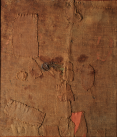Abstract
This essay discusses how and to what ends eleventh- to early thirteenth-century writers from the schools, monastic as well as secular, more or less explicitly incorporated elements from and allusions to the canon of classical Roman poetry into their own work. What function did these elements have, beyond literary embellishment and erudite showing-off? This essay remains a historian's view and represents a historian's attempt to grapple with the meaning and function of this classicising literature in its particular social setting – namely that of the northern European educational milieus of the two centuries after the first millennium. The hypothesis is that these intertextual references played a crucial part in making it possible to engage in very direct and often outrageous satire – which functioned as a clever pedagogical tool to enliven teaching, but also seems to have had a connection to a specific time in the school calendar, namely the Christmas season, during which the unwritten rules of decorum and restrictions that governed social interaction in the school community were momentarily relaxed. It is my contention that these texts were not an aberration from a more solemn and serious norm, but integral parts of a didactic and distinctly performative practice, which included a deliberate, subtly regulated playing with roles of power and authority and, not least, role-reversals. This seems particularly to be the case in the correspondence (real or imagined) consisting of letter-poems – often erotically explicit – between teachers and their students. A select number of examples of this intriguing literature, from various milieus and settings, are presented, and the essay addresses the question of how we as modern scholars should interpret it – particularly if our aim is to use it as a repository of historical source material regarding the social life of the high-medieval learned milieus. It is contended that these remarkable and sometimes outrageous texts, as well as being vehicles of the teaching of Latin composition, became a tool for negotiating and defining intimate relationships between people within these learned milieus, whether between equals, between superiors and subordinates, or between men and women.
Except where otherwise noted, the content of this site is licensed under a Creative Commons Attribution-ShareAlike 4.0 International (CC BY-SA 4.0).
Authors retain copyright of their work. The CC BY-SA 4.0 licence allows readers to copy and redistribute the material in any medium or format, and to remix, transform, and build upon the material for any purpose, even commercially, as long as the original author is credited and as long as any works that are derived from the original are distributed under the same terms.

